U.S. Soybean Farmers Celebrate 35th Anniversary of U.S. Soy in China
- Category:
- General News
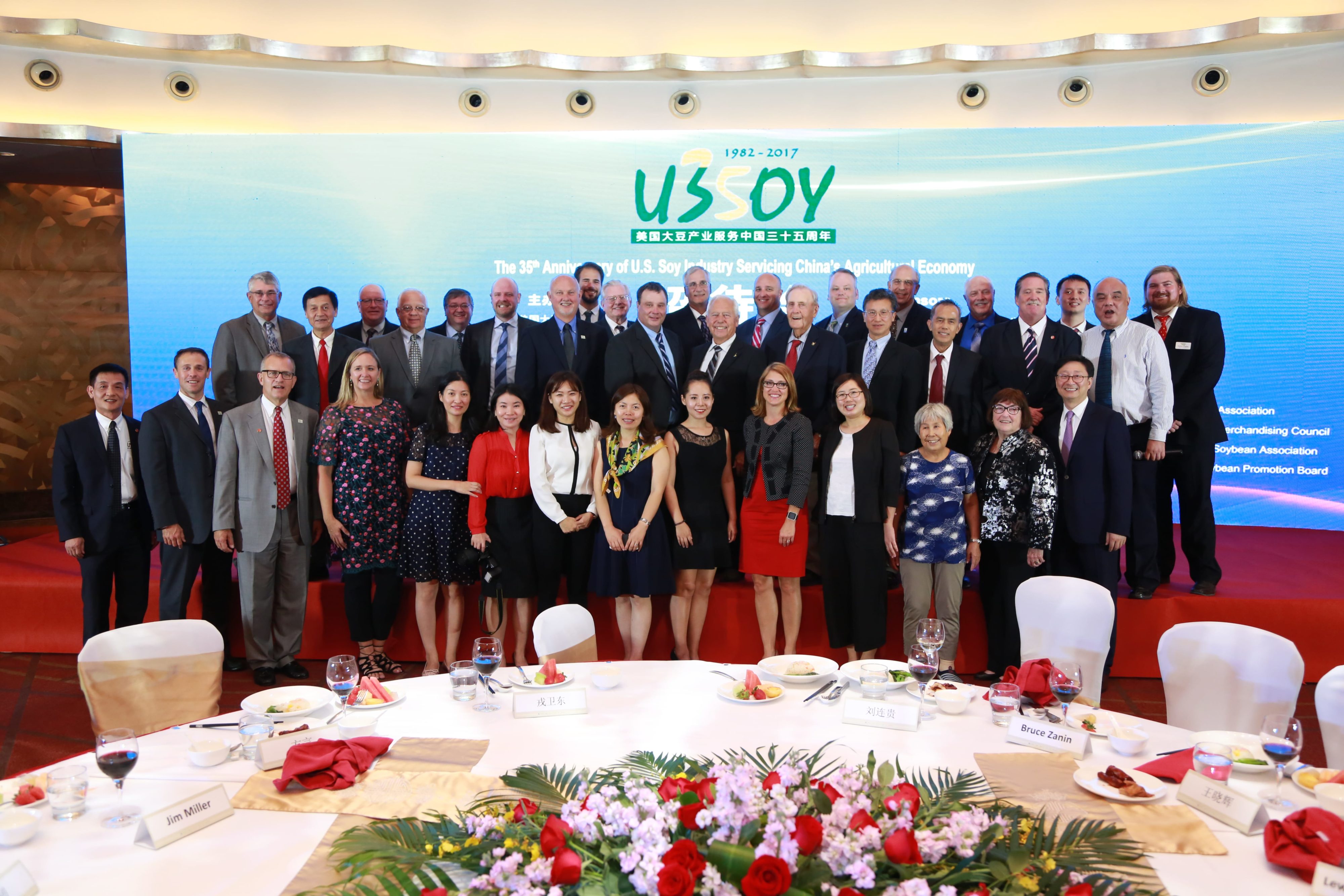
U.S. Soy grower leaders visited China from September 16-23, taking part in a celebration of 35 years of partnership between the U.S. Soy industry and China.
USSEC chairman and American Soybean Association (ASA) director Jim Miller, ASA director Dean Coleman, ASA president Ron Moore, USB vice president Lewis Bainbridge, and USSEC director Sharon Covert represented the more than 300,000 U.S. Soy farmers.
State representatives and staff from qualified state soybean boards (QSSB) rounded out the U.S. delegation. Directors Tom Griffiths, Elaine Gillis, and Andy Tauer represented the Indiana Soybean Alliance. Iowa Soybean Association director Bill Shipley was joined by ISA CEO Kirk Leeds and International Marketing Manager Grant Kimberley. Minnesota Soybean Research & Promotion Council director Mark Brown was joined by MSR&PC staff member Joseph Smentek. Tony Stafford and Casey Wasser represented the Missouri Soybean Merchandising Council. Director Austin Langley, of the North Dakota Soybean Promotion Council represented his state. The Ohio Soybean Council was represented by
director Bill Bayliss. Tennessee Soybean Promotion Board director David Womack was supported by Parks Wells, Tennessee staff.

Industry meetings kicked off Monday in Beijing. At the meeting with the Ministry of Agriculture, delegates met with Mr. Ye Anping, Deputy General, Department of International Cooperation. Mr. Ye Called for USSEC to focus more efforts on public education around biotech. “We need to stand in each other’s shoes and understand our positions. That’s the best way to mutual understanding,” he said.
Speaking to U.S. grower leaders, he continued,
We can see that you are all very proud to call yourselves farmers. One day, when Chinese farmers are also proud to say they are farmers, that’s when we’ll know that we modernized agriculture.

At the Chinese Feed Industry Association Meeting, some of the grower leaders met with Mr. He Xintian, Secretary General. USSEC collaborates with the association on the annual Sino U.S. Grains event. Mr. He stated, “Our organizations have great potential for collaboration. We require more and more soybeans every year. Soybean production in China cannot meet demands of the market here, and U.S. soybeans have a great reputation in this market.” Chinese Feed Industry Association president added, “We both benefit a lot from trade between our two nations.”

Prior to the 35th anniversary celebration gala, the U.S. delegates met with U.S. Ambassador to China Terry Branstad to learn more about the market for U.S. Soy in China. The grower leaders listened to Ambassador Branstad’s views on the overall relationship between the U.S. and China, China’s view of the U.S. as a supplier of ag products, China’s own ag production, biotech approvals, and China’s continued demand growth for soybeans.
At the 35th Anniversary celebration, Mr. Miller gave a welcome speech, saying that he was “humbled to represent the hundreds of U.S. soybean farmers who came before me and determined 35 years ago to begin operations in China, and decided to keep the operations going even in the face of nearly twenty years of no exports to China.” Ambassador Branstad congratulated the U.S. – Sino partnership and attendees watched a video about the history of the partnership.
Mr. Moore toasted the continuation of the partnership, and recognition awards were presented to key partners. Mr. Bainbridge provided closing remarks, stressing the collaboration between the two countries. “Our two industries have come a long way together, and are now reaping the rewards of our shared success,” he stated. “These rewards are being realized because of the effort and attention that has been placed on working collaboratively and communicating to each other about what is needed to achieve the next levels of success.”
Tuesday’s activities included a tour of the Hebei Hope Full Grains and Oils Company in Beijing. Founded in 1999, Hope Full Group is now one of the biggest private owned soybean crushing groups in China. Headquartered in Yanjiao bordering Beijing, they have been playing an active role in supplying soybean oil to the capital and also soybean meal to neighboring livestock farmers with a crushing facility processing daily 7,000 metric tons (MT) of soybeans. The company also started diversifying its businesses from soybean crushing to ocean shipping, international trading, grain warehousing, port logistics, real estate, and hotel management. The group now operates two crushing facilities in China with daily crushing capacity over 14,000 MT and they are expanding their operations by building two brand new facilities along the coastal region near Beijing. In MY 2015/16, Hope Full group was one of the top 10 importers of U.S. soybeans with a total purchase of over 1 million metric tons (MMT) and U.S. share in their total purchase was 46 percent, 11 percentage points higher than the national average of 35 percent.
Hope Full Group is an active participant in USSEC activities such as the U.S. Soy Global Trade Exchange, risk management training, market, and technical seminars. U.S. Soy grower leaders have visited their headquarters for many times for a better understanding of their strategy, their view of the market, and their expectation for U.S. Soy industry services in China.

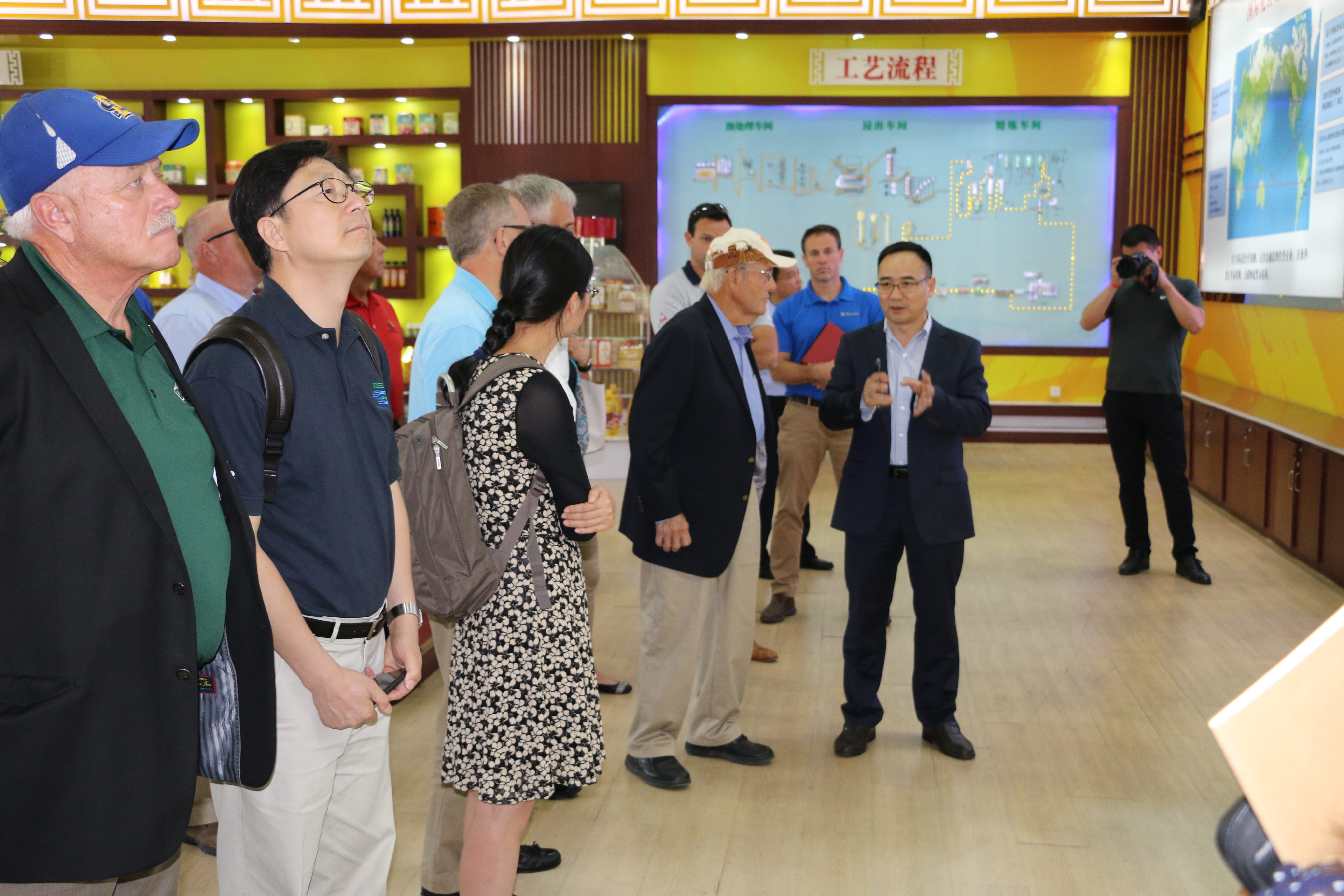
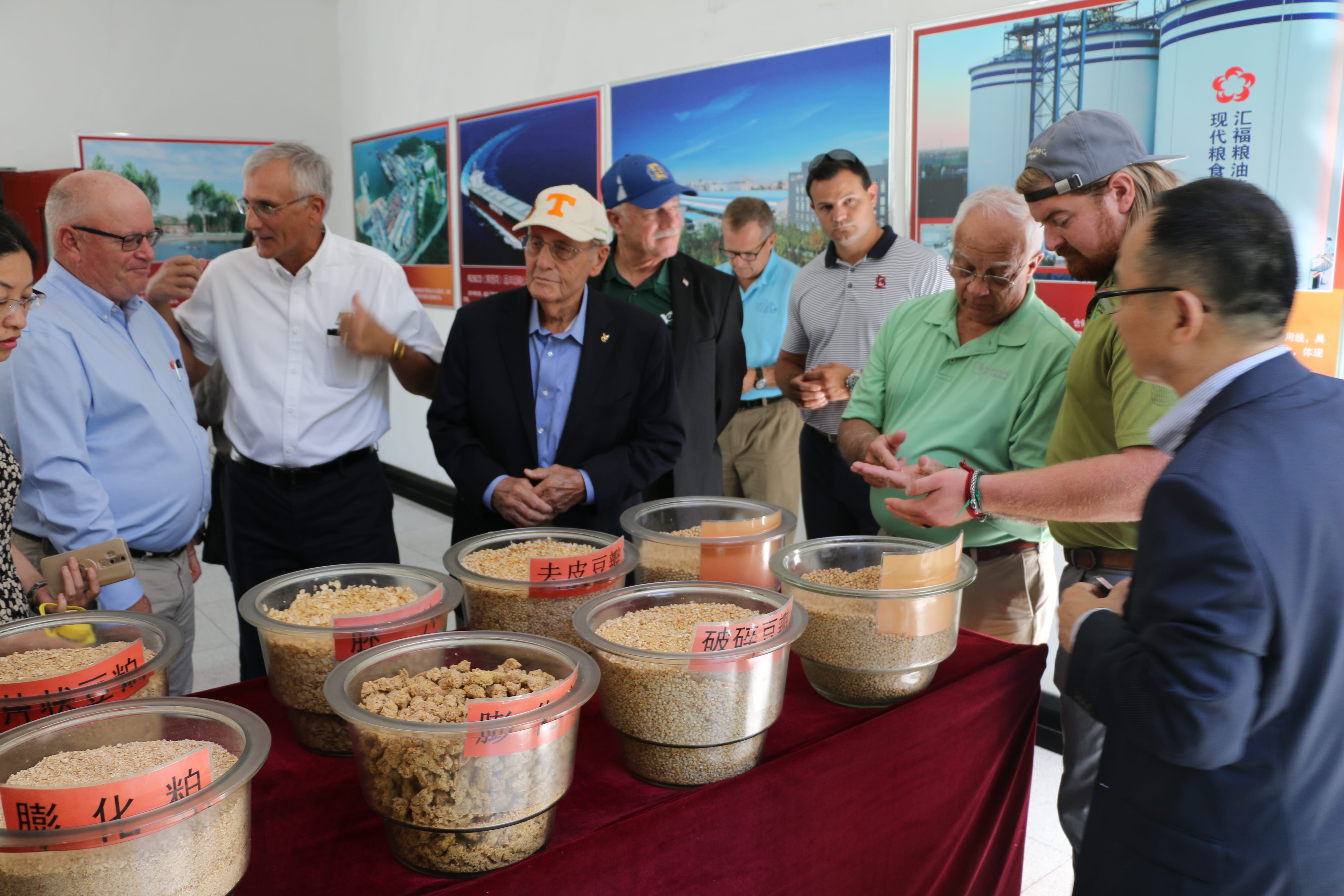

On Wednesday, the U.S. delegation traveled to Shanghai, where they toured USSEC’s intensive pond aquaculture (IPA) farm in Songjiang.
Jesse Chappell, Extension Specialist Associate Professor, Aquaculture Systems Development, Auburn University, joined the group to describe the technology.

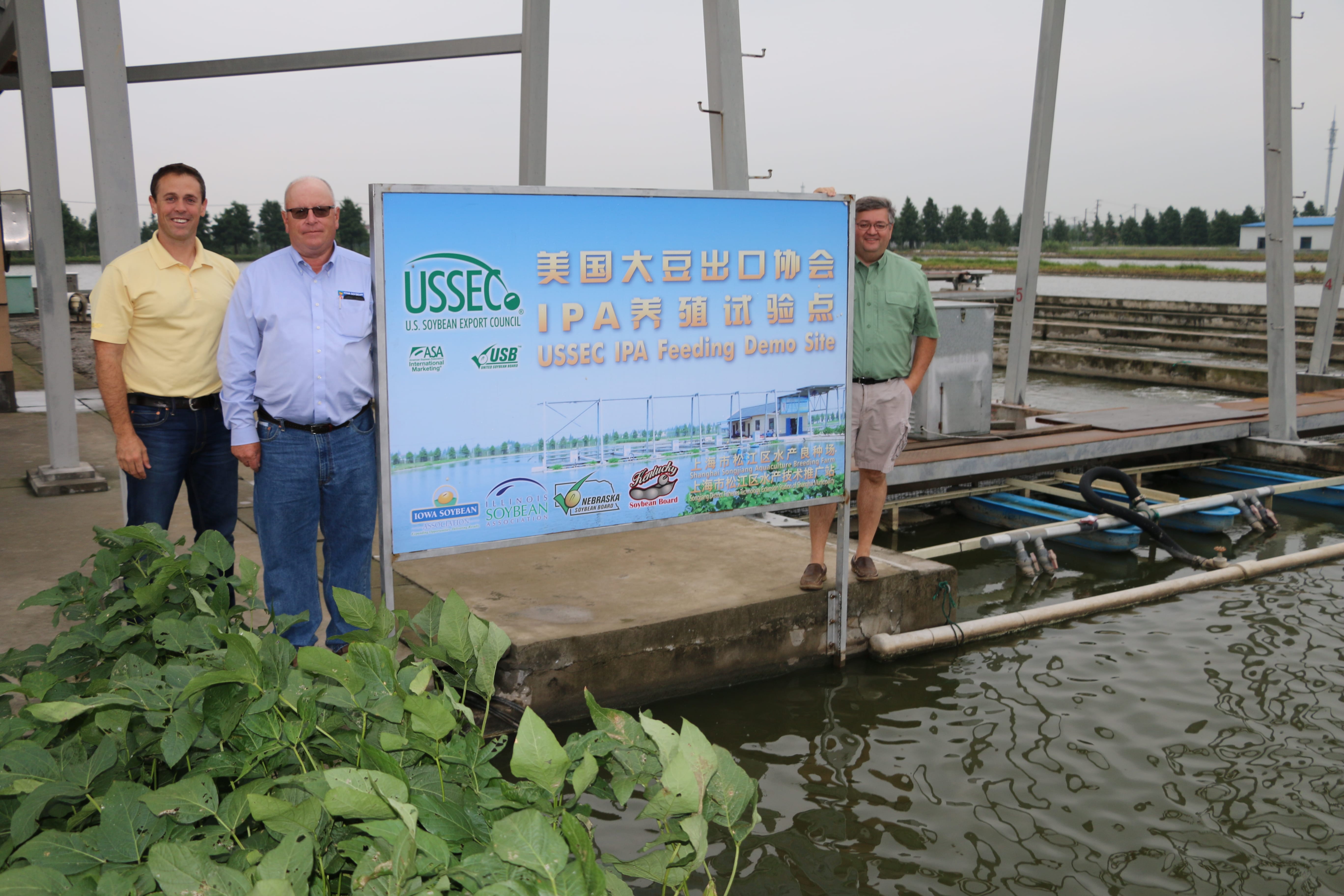
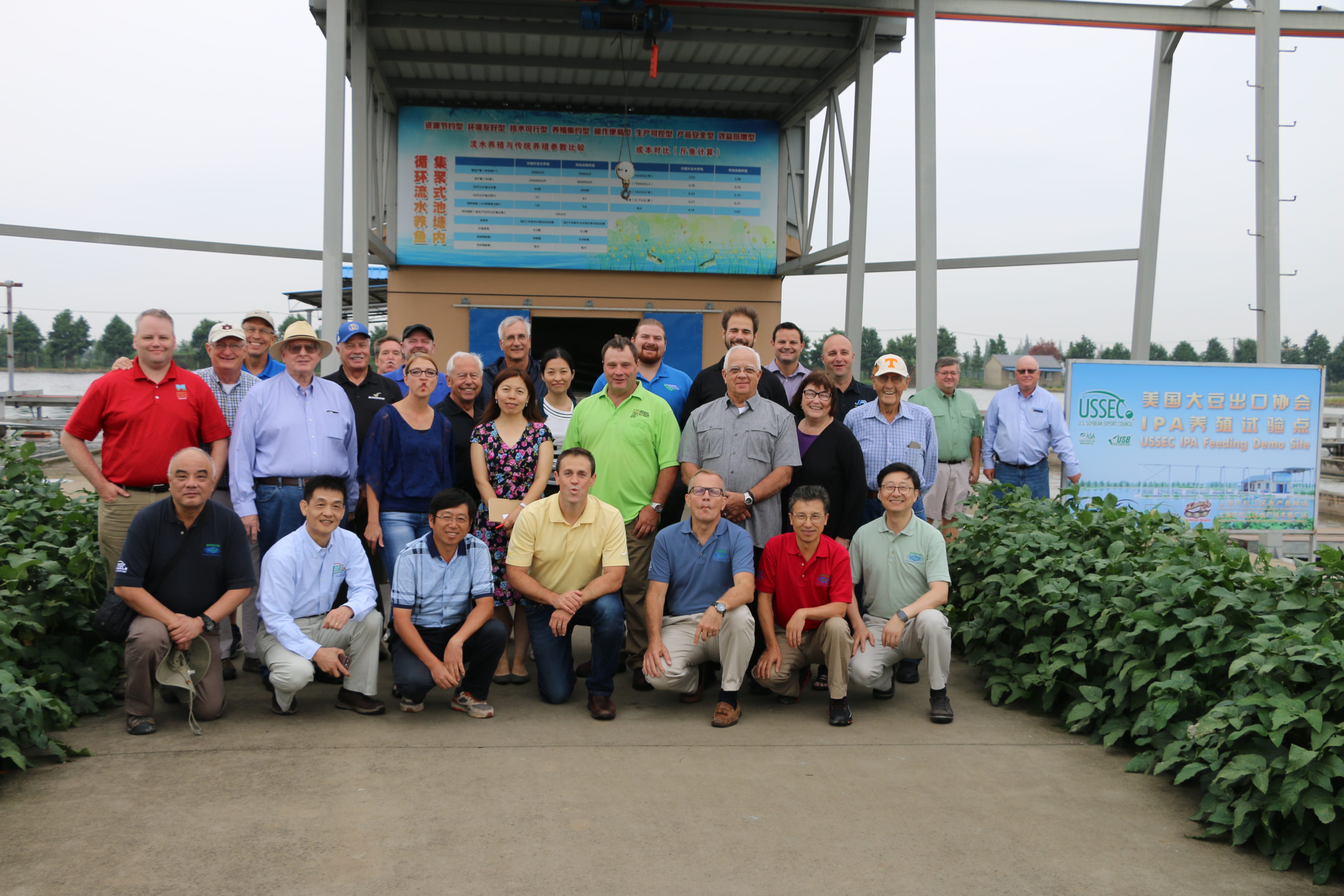
The Shanghai Songjian Maotian Wetland Ecological Farm is a newly built and state-owned fishery farm with a total aquaculture water area of about 800 mu (about 133 acres). All the fishponds are renovated with good maintenance. The major fish species cultured on the farm are Wuchang Carp, Grass Carp, and Crucian Carp, among others.
Mr. Zhang Youliang, general manager of the farm, was very much interested in the adoption of the USSEC IPA and started a joint feeding trial project with USSEC in 2014/15 with three cells and in 2015/16, they even expanded the scale to be doubled with different species.
This company has been extremely cooperative in educating other farmers on IPA technology, in receiving USSEC grower leaders, consultants, and industry cooperators. They have been very actively participating in seminars, conferences, training teams, and one-on-one consultations.
In Thursday in Hangzhou, participants attended the JCI conference, where Mr. Moore gave a presentation and took part in a panel discussion. A gala dinner was given that evening.

On Friday, the mission’s last day, participants visited Liangyou Port Logistic Complex in Waigaoqiao, Pudong, where they saw a Panamax from the Pacific Northwest U.S. unloading bulk soy.
Shanghai Bright & Liangyou Group is a state owned group with more than 20 branches and share holding companies. It used to be part of the Municipality’s Grain Bureau under central planning era handling all grain and oilseed distribution, storage, and processing for the Shanghai administration. Their current businesses are diversified in many areas such as grain and oil processing, storage, international and domestic trade, warehousing logistics, and convenience store operation, among others. Two years ago, this group merged with another state owned company, the Bright Dairy Group, in an effort to streamline the resources and increase efficiency of state owned enterprises.





There are two crushing plants under Shanghai Liangyou, with capacity of processing 1500 and 3000 MT per day of soybeans respectively, one on the Huangpu River and the other on the Yangtze River in the grain and oil logistics complex. Shanghai Liangyou has been a close and long term friend of the U.S. Soy industry, starting in the early 90s. The Group has been not only a consistent U.S. soybean buyer, but also an important local sponsor of USSEC. Being the single large scale crusher in Shanghai, the Group has received numerous U.S. soybean delegations to visit their plant, including grower leaders, technical/marketing experts and even high ranking U.S. Department of Agriculture (USDA) officials, the Group has greatly helped the visitors better understand the market in Yangtze River delta region and local soybean industry.
In 2009, the Group started construction on a new port in Wai Gao Qiao port area in the lower branch of the Yangtze River, about 25 kilometers from the Yangtze River mouth and 22 kilometers from downtown Shanghai. The complex officially began its operation in January 2010. It is a modern grains and oils processing and logistics complex with multi functions of grains and oils reserve, transferring, distribution, and trading and information services. The core operation of the facility is to provide third-party logistic service. The whole complex consists of loading and unloading facilities at Yangtze River port, river barge terminal, and railway operation zone.
The two deep-water Yangtze River berths can simultaneously handle two vessels, ranging from 50,000 to 70,000 MT, while the inland river can berth 2 small vessels of 5,000 MT. The port can receive the imported soybeans directly and the conveyer belt can transfer the beans to the processing line, which is capable of processing 3000 MT per day or to the warehousing silos. A refinery next to the crushing plant is capable to processing 360,000 metric tons of edible oils, in small and large packages in a year.
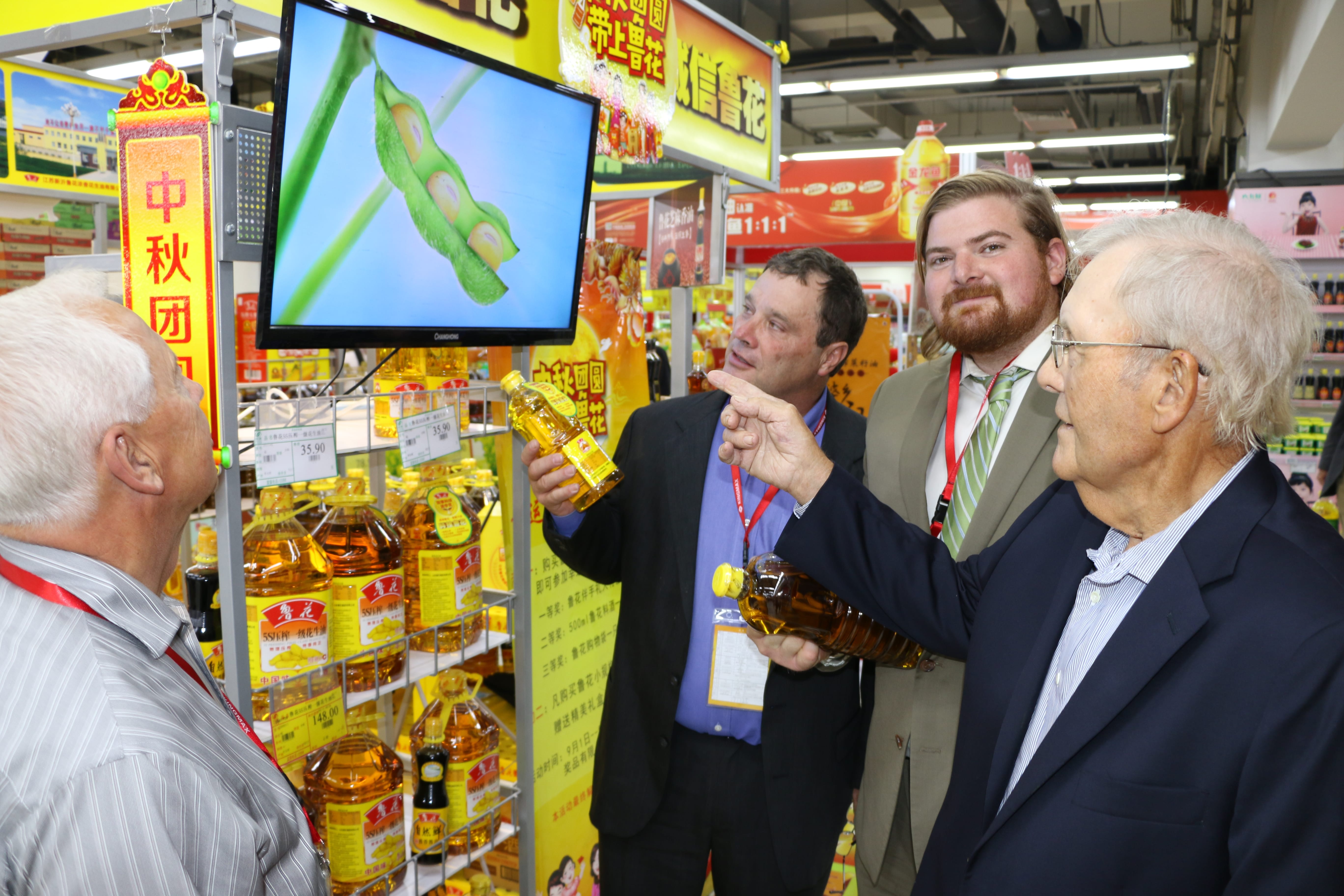



China remains U.S. Soy’s top customer, buying more than one of every four rows of soybeans grown in the U.S. The U.S. Soy industry celebrates its long-term partnership with China, dating back to 1982.